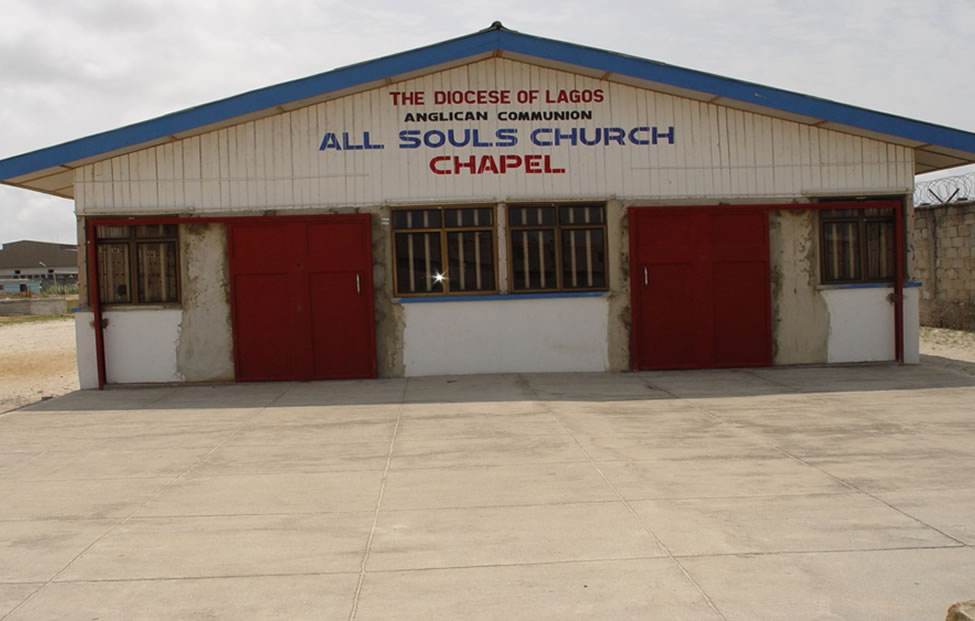A. The Commission
Shortly after birthing a vision for an Anglican church in the Lekki area, the then Archbishop of the Lagos Anglican Diocese, His Grace, The Most Rev (Dr.) E. Adebola Ademowo ordained Reverend Odejimi as a deacon and commissioned him to go and set up a church on the Diocese’s land in Lekki.
After this, a series of meeting were held initially at the Saint Paul’s Church, Breadfruit, by the building committee. But due to poor welcome and challenges faced from Saint Paul’s Church, the Vicar who is the presiding Chairman of the Building Committee and the committee members including General Victor Odeka moved their meetings to the General’s residence.
During this period, the retired General then introduced the Vicar to Mr. Wisdom Dafinone-the then-President of Lekki Resident Association. After this meeting, the President and Vicar started going from house to house evangelizing to the residents- Anglicans and non-Anglicans; this task at times tarried till late nights. Most people came as part of an obligation but stayed after listening to the Vicar’s eloquent and inspiring teachings.
As the church grew, its Parish Council had no meeting because the church location was bare, so meetings were held in different member’s residence neither was there a place for mid-week service.
B. Parish on the murky sands of Lekki (Under the Canopy)
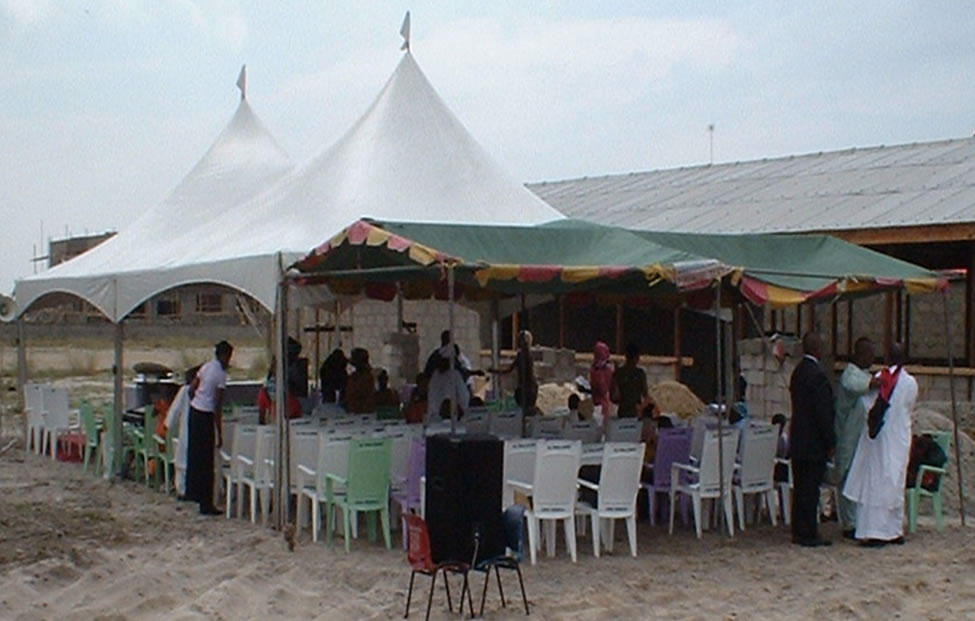
Before Venerable Olubisi Odejimi was commissioned to ‘lead’ the then Anglican Church on the Peninsula, services were being held occasionally and most of the parishioners were unskilled workers in the Lekki axis.
On 18th January 2003, under a dilapidated tent erected on the murky sands of diocesan land at Lekki Phase I, Venerable Olu Odejimi held his first service with a total attendance of 27 people which included labourers, servants and carpenters. From that day on, cancellation of church services was never an option again though there were glaring obstacles to overcome. For example no toilet for parishioners to use; so retired Primate, the late Most Rev (Dr) Joseph Abiodun Adetiloye, made the ones in his boy’s quarters available. Also, there was no space for youth/children’s church, this also was held in his residence and Parish Council meetings were hosted in different parishioner homes at various times. The Vicar was not left out in this ordeal. He had to bring the Public Address system and piano with his car to church and also ensure the tents were in the best shape at every meeting. At times when the rains came, the parishioners had to push up the hoods of the tent to dislodge the water.
Despite all, the Vicar’s commitment never diminished and this encouraged the parishioners’ dedication to the work of God.
Subsequently, more people joined the parish, chairs were brought, toilets were built, a generating set was donated, and more tents were hired from Tent Event Company.
C. Laying of the First Parish Church foundation (The role of St Paul Church)


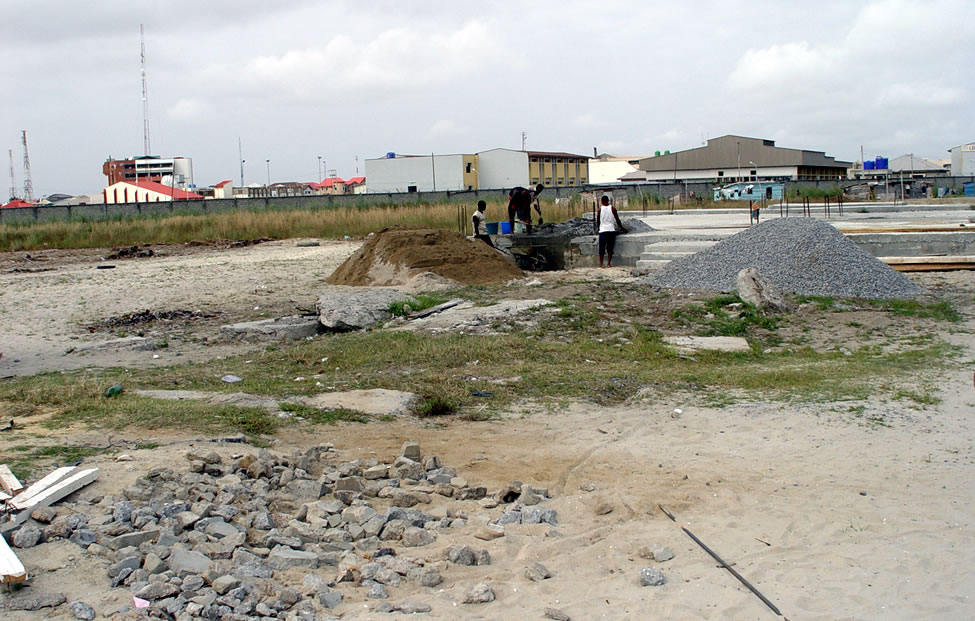
The interim plan suggested by the building committee of the mother church, St. Paul’s Anglican Church, Breadfruit, was to build a small church. And Venerable Olu Odejimi became a member of this committee upon his admission to the Deaconate of the Lagos Diocese, and assignment to lead the Lekki church. The building committee in its wisdom proposed that a small church be built for Anglican Church on the Peninsula. It was anticipated that this step would help promote the building of a big church, which had been estimated to cost N500 million inclusive of a soil test estimated at N50 million.
Some months later, precisely 1st of March 2003, a Fund Raising Ceremony was held to raise funds for the laying of the foundation of the proposed small church. The proposed timeline for the project was two months but it wasn’t completed until after six months. The contractor was Chief Akande, a personal friend of Chief Tola Sotinwa, the Chairman of the Saint Paul’s building committee.
After this event, the small church was abandoned and all efforts were concentrated on the wooden chapel.
D. Wooden Chapel
Due to the pressing need to provide the parishioners of Anglican Church on the Peninsular with a covered-up enclosure, a temporary shed-like church was built on the Diocesan portion of the Lekki land earmarked for a housing development.
The idea of wooden chapel was conceived by Venerable Olu Odejimi when he visited the Baptist Church in Olufemi Street, Surulere Lagos.
Towards its development, the Vicar refused donations from parishioners because he wanted the building to be his own contributions to the Church.
Eight months after the commencement of the church under the tents, she moved from worshipping under hired tents, into a shed-like church, Jakande style: no doors, no windows with cemented floor. Then, the church was rechristened All Souls Anglican Chapel, and dedicated magnanimously by His Grace, The Most Rev (Dr.) E Adebola Ademowo, on Sunday, 21st September, 2003. Also, on that very day, the church was certified by His Grace to perform baptismal, confirmation, child naming and dedication, marriage, family and church harvest and other ceremonies.

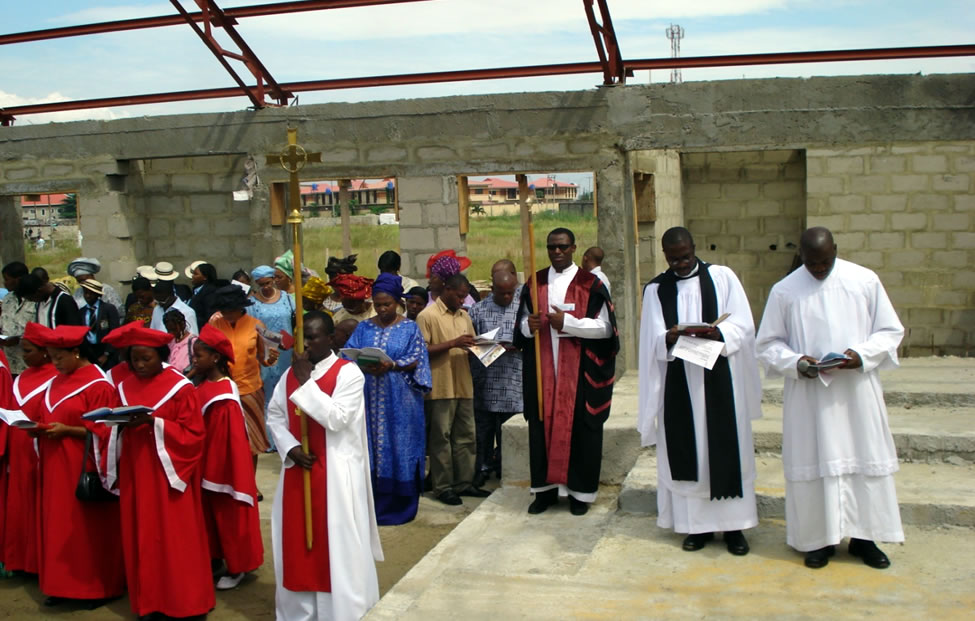
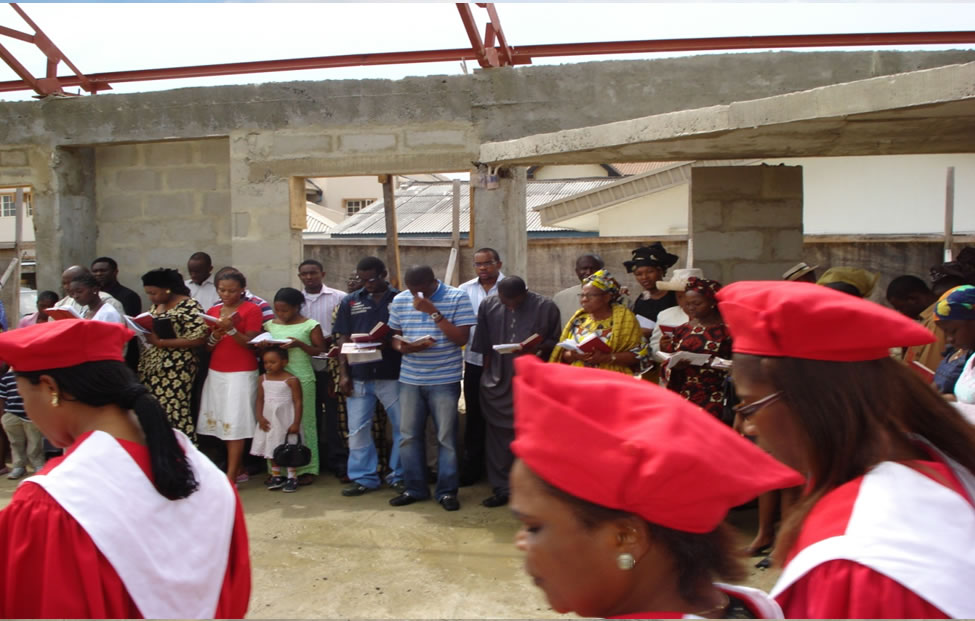
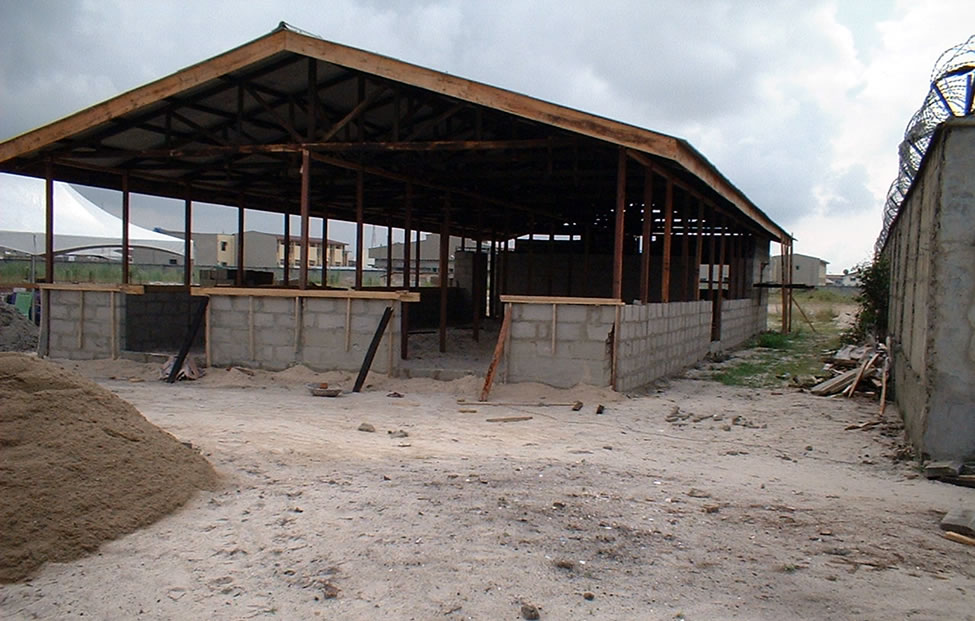
This was a major milestone that the church reached because it is quite unusual and astounding for an Anglican church with barely three years of history to be certified by the Anglican Diocese.
At this point, the wooden chapel began to undergo major and rapid transformations. It started with the removal of the numerous supporting pillars inside the chapel with the advice of ‘Architect Dayansike’ to create more room. Though there were initial objections by the parishioners because they were afraid that the building may collapse on them. Later on, the windows were designed and fixed, also the doors. For cooling of inside the chapel, big industrial fans were used but later a call was made for voluntary financial or air conditioning units’ donations from the members. People gave until there was an overflow. Prince Abayomi Shonuga, MD/CEO Glass Motors, also joined one of the services and he also offered financial support the work of God. Someone else, made robes for the choir free of charge.

After a while, the Vicar found some of the parishioners worthy to be in the leadership and people were opted.
As time passed, other additions were made to the wooden chapel. These include the Dowen Extension on the left side of the chancel for the Dowen students. This was built to minimise their service disruption on arrival and departure. Then, cantilevered choir stall for the storage of the instrument and choir robes was added. Initially, there was no storehouse, the instrument were brought in by the Vicar in the morning of the service, dismantled and taken back home after every service until the extension- cantilevered choir stall- was built.
To our surprise, the pews of the wooden chapel were filled before its completion, such that we were already contemplating the next level.
